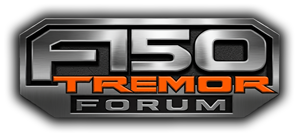Maybe I'm wrong here, but it was my understanding of the Torsen that it didn't act like a LSD in that LSDs preferentially apply power to the wheel with traction, due to higher torque on that wheel (in the clutchpack design, anyway) and the Torsen, when one wheel is slipping, locks the front axel to essentially act like a front locker that can automatically turn on or off depending on need. The Torsen is otherwise designed to be able to allow the front axels to rotate at different speeds such as around turns.
But, with this all in mind, a Torsen is always on, in 2WD and 4WD, completely independent of the drive mode, so couldn't a sharp turn, whether in 4A, 4H, 2H, act like wheel slippage, since it causes one wheel to turn faster than the other, and activate the Torsen? I mean, it doesn't do that, but...
I ordered a Torsen on mine because I was previously driving a 2001 Yukon, which supposedly has all wheel drive, on fairly deep snow over an icy road, and the front wheels were so slow to engage. So, when the truck would start sliding toward the edge of the road, I'd start steering toward the center of the road and would have to wait for the front wheels to kick in until I was just about off the road, then they'd engage and keep me from going off the road. (This happened once unintentionally, then several more times intentionally as I was trying to recreate it to see if it was full-time AWD or just as-needed. It didn't help that my studded snow tires were at home and I was running the bald regular tires... This was an empty country road with absolutely no traffic or I wouldn't have been playing with it like I did.) Either the wheels found traction on the shoulder or the AWD engaged- not sure which. Either way, happy to have the Torsen, though it's hard to say whether I've ever needed it since you don't really know when it's working.








